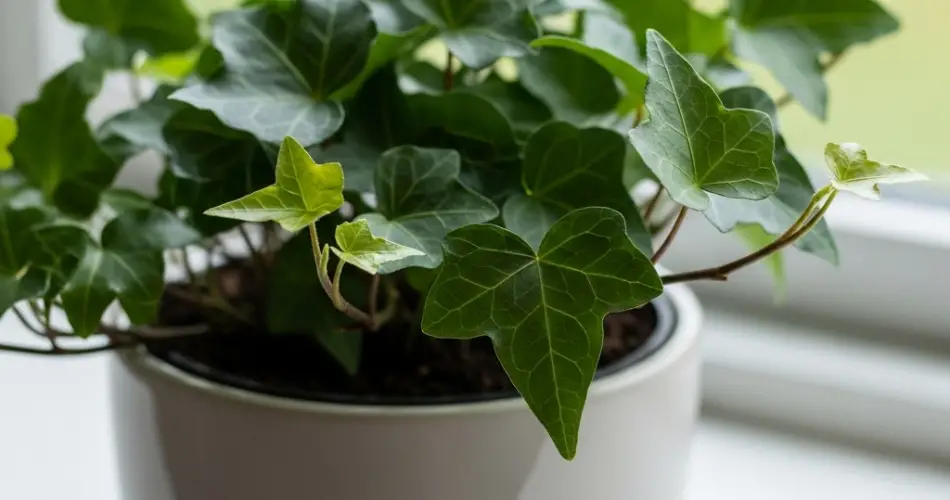English ivy and other varieties of indoor ivy plants bring a touch of elegance and greenery to any room with their cascading vines and lush leaves. However, without proper control, ivy can quickly outgrow its boundaries and become leggy or unruly. Growing ivy in pots is an excellent way to enjoy its beauty while managing its size, shape, and overall health. With the right pot, soil, pruning routine, and environment, you can master the art of growing ivy indoors in a clean, compact, and visually pleasing way.
Why Grow Ivy in Pots?
Container-growing allows you to fully control ivy’s aggressive growth habit. In the ground, ivy can become invasive and difficult to manage. But in pots, you set the limits, making it perfect for desks, shelves, hanging baskets, or window sills.
Benefits of pot-growing ivy include:
-
Controlled root spread
-
Easy relocation for light adjustments
-
Better moisture management
-
Containment of aggressive runners
Potted ivy also gives you the freedom to experiment with training shapes—whether you want it to trail down, climb a support, or form a topiary.
Choosing the Right Pot
Ivy is not fussy about pot materials, but there are key features to look for:
-
Drainage Holes: These are essential. Ivy doesn’t like soggy soil, and root rot is a common problem in poorly draining containers.
-
Size: Start with a pot that comfortably fits the current root ball, with just an inch or two of space around it. Oversized pots retain too much water and delay growth.
-
Material: Plastic pots retain moisture well and are lightweight, while ceramic or terracotta pots offer better breathability and a more decorative touch. Whichever you choose, make sure it suits your room’s humidity and watering schedule.
Hanging pots and elevated planters are also popular choices, allowing ivy’s vines to cascade gracefully.
Soil Needs and Potting Mix
Ivy prefers loose, well-draining potting soil with moderate nutrient levels. A general-purpose houseplant mix works well, especially if it contains peat moss or coco coir for moisture retention and perlite for aeration.
To create your own ivy potting blend:
-
2 parts peat moss or coco coir
-
1 part perlite or sand
-
1 part compost or loamy garden soil
This mixture promotes healthy root development and prevents compaction, which is especially important in containers.
Light Requirements
Indoor ivy grows best in bright, indirect light. Near a north or east-facing window is ideal. While some types of ivy can tolerate low light, prolonged dim conditions lead to leggy growth and dull leaves.
If the light is too strong (e.g., in a south-facing window), filter it with sheer curtains to prevent leaf scorching.
Variegated ivy types generally need more light than solid green varieties to maintain their patterns. Watch your plant closely—if new leaves are small and pale, it may need more light.
Watering and Humidity
The key to watering ivy is consistency without overdoing it. Allow the top inch of soil to dry out before watering again.
Watering tips:
-
Water thoroughly, then let excess drain away.
-
Don’t let the pot sit in standing water.
-
Reduce watering frequency in cooler months.
Ivy appreciates moderate humidity but can adapt to standard indoor levels. If your home is particularly dry, mist the leaves occasionally or place the pot on a tray filled with pebbles and water to raise humidity around the plant.
Pruning for Shape and Control
Regular pruning keeps ivy compact and encourages fuller growth. Use clean scissors or pruning shears to:
-
Trim overly long or leggy vines
-
Remove any yellowing or damaged leaves
-
Shape the plant around supports or trellises
Pinching off the tips of vines stimulates branching, giving the plant a bushier appearance. You can also train ivy to climb decorative wire frames or grow as a tabletop topiary by guiding new growth around a form.
Common Problems and Solutions
-
Leggy Growth: Caused by low light. Move your ivy to a brighter spot and trim back long, bare vines to encourage new growth.
-
Yellow Leaves: May indicate overwatering or poor drainage. Check the roots and soil, and let the plant dry out slightly.
-
Spider Mites: Ivy is prone to pest infestations in dry indoor air. Mist leaves regularly and check under them for tiny webs. Use neem oil or insecticidal soap if needed.
Repotting and Long-Term Care
Ivy doesn’t need frequent repotting—usually once every two years is sufficient. Signs that it’s time to repot include:
-
Roots growing out of the drainage holes
-
Water draining too quickly or pooling on the surface
-
A visible decline in growth or leaf production
When repotting, move to a container just one size larger and refresh the soil completely to restore nutrients and improve root space.
Final Thoughts
Growing ivy indoors in pots is both manageable and rewarding. With the right pot, soil, light, and trimming routine, you can enjoy its rich foliage without worrying about uncontrollable growth. Whether trailing from a shelf, wrapped around a trellis, or pruned into a miniature shape, potted ivy brings timeless beauty and a natural touch to any living space—all while staying neatly under your control.



